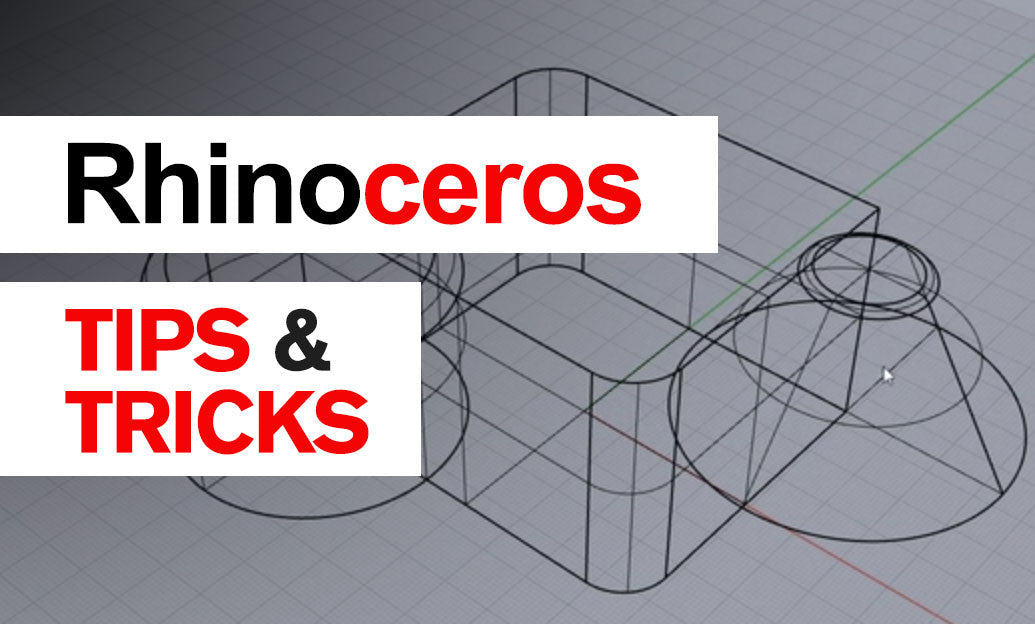Your Cart is Empty
Customer Testimonials
-
"Great customer service. The folks at Novedge were super helpful in navigating a somewhat complicated order including software upgrades and serial numbers in various stages of inactivity. They were friendly and helpful throughout the process.."
Ruben Ruckmark
"Quick & very helpful. We have been using Novedge for years and are very happy with their quick service when we need to make a purchase and excellent support resolving any issues."
Will Woodson
"Scott is the best. He reminds me about subscriptions dates, guides me in the correct direction for updates. He always responds promptly to me. He is literally the reason I continue to work with Novedge and will do so in the future."
Edward Mchugh
"Calvin Lok is “the man”. After my purchase of Sketchup 2021, he called me and provided step-by-step instructions to ease me through difficulties I was having with the setup of my new software."
Mike Borzage
Rhino 3D Tip: Enhancing Modeling Efficiency with Rhino 3D's Gumball Widget: Tips for Intuitive Editing and Transformations
June 04, 2024 2 min read

Mastering the Gumball feature in Rhino 3D Software can significantly enhance your modeling efficiency and intuitiveness. Gumball is a powerful widget that allows for quick and interactive transformations of objects and sub-objects without the need for typing commands or accessing multiple tools. Here's how you can leverage the Gumball for intuitive editing:
- Enable Gumball: If it's not already active, you can enable Gumball by clicking on the Gumball icon on the status bar or by typing
Gumballin the command line. - Positioning the Gumball: By default, the Gumball aligns to an object's bounding box. However, you can reposition it by holding down the
Ctrlkey and dragging the Gumball to a new location. This is useful for setting a custom pivot point for rotations and scaling. - Scaling Objects: Click and drag on the square handles to scale your object in one direction. For uniform scaling, use the white sphere handle at the center of the Gumball.
- Rotating Objects: The circular arcs allow you to rotate the object around a specific axis. Click and drag outside the arc to freely rotate the object with real-time feedback.
- Moving Objects: Use the arrow handles to move your object along the associated axis. For planar movement, click and drag the planar handles shaped like rectangles.
- Snapping: Gumball respects Rhino's snapping settings. You can use object snaps to precisely relocate, rotate, or scale objects in relation to other geometry.
- Incremental Adjustments: By holding the
Shiftkey while dragging a handle, you can make incremental transformations. The increments are defined in Rhino's 'Gumball settings' which can be accessed by right-clicking on the Gumball itself. - Extruding and Duplicating:
Alt-dragging an arrow or planar handle will extrude surfaces or duplicate objects along the given axis or plane, which is a quick way to create new geometry from existing shapes. - Customizing Gumball: Right-click on the Gumball to access its settings where you can adjust its size, behavior, and alignment options. Customizing the Gumball can make it more suited to your particular workflow.
- Sub-Object Editing: Enter sub-object selection by pressing
Ctrl+Shiftand clicking on a surface, edge, or vertex. Gumball then allows you to manipulate the selected sub-object directly, which is great for fine-tuning your models.
By integrating Gumball into your daily use of Rhino, you'll find that many common transformation tasks are more accessible and faster to execute. For further exploration and detailed tutorials on Rhino 3D and Gumball, consider checking out resources provided by NOVEDGE, a leading online software store for design professionals.
You can find all the Rhino products on the NOVEDGE web site at this page.
Also in Design News

Harnessing Distributed Ledger Technology for Secure and Transparent Design Collaboration
May 06, 2025 11 min read
Read MoreSubscribe
Sign up to get the latest on sales, new releases and more …




